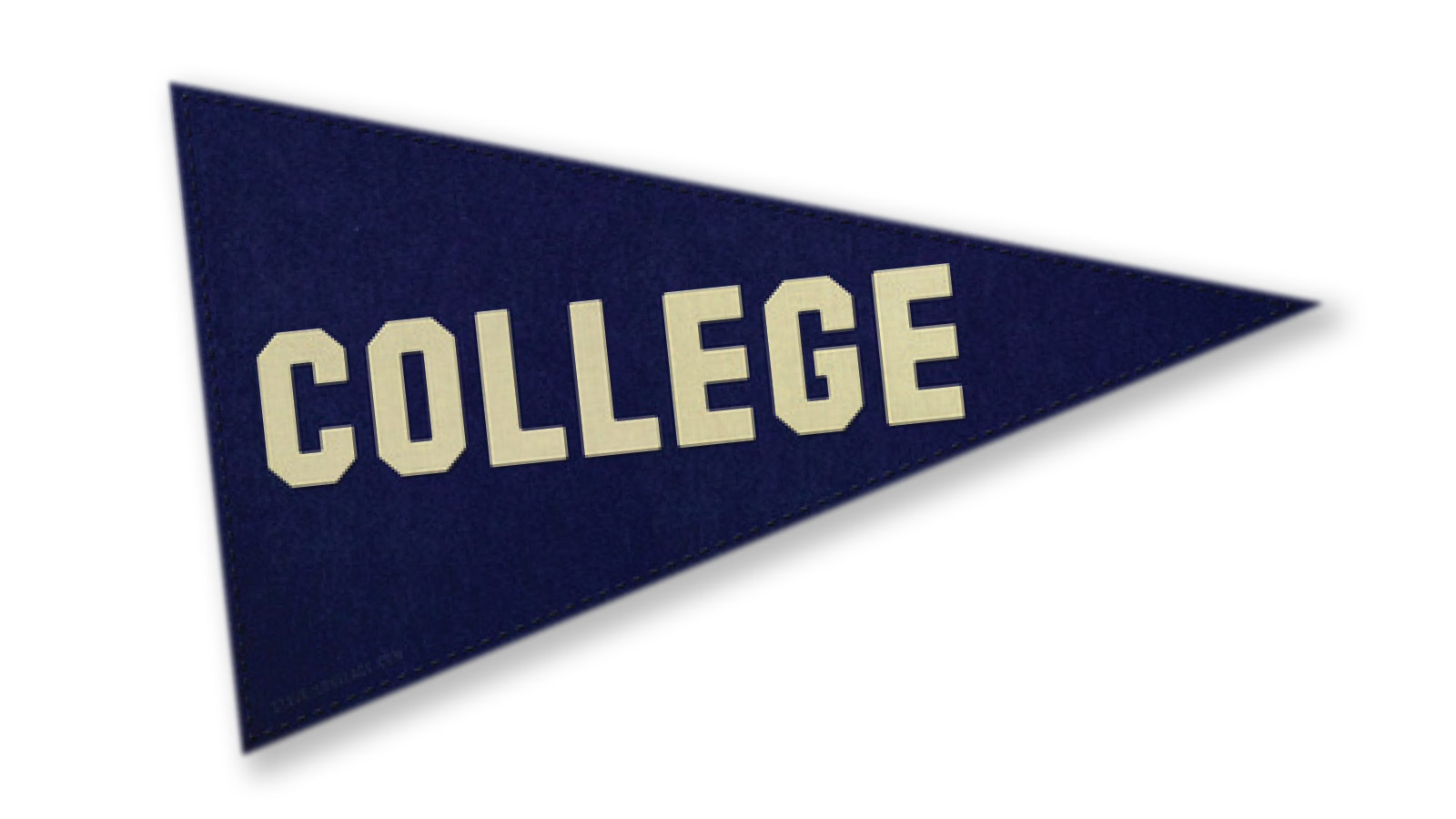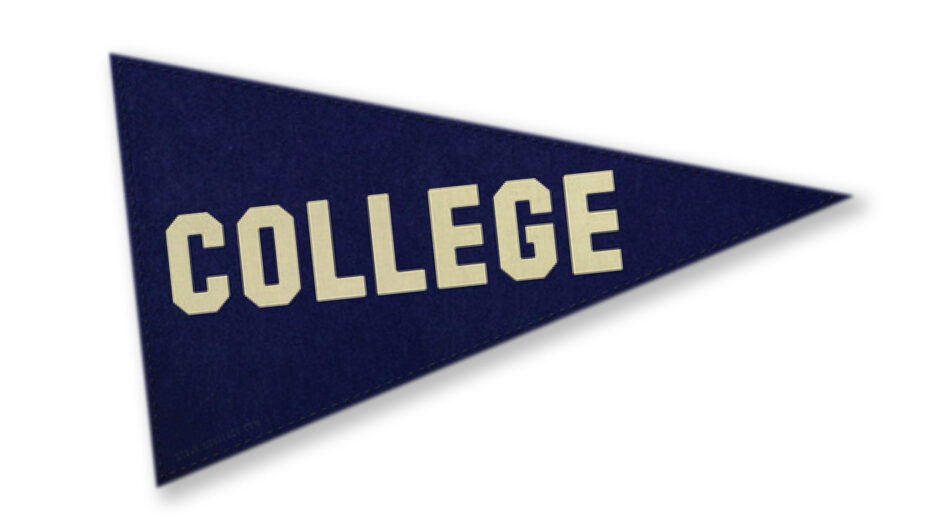 Over the past year, I have received intensive lessons in selling, marketing, competitive analysis, yield management, risk assessment, data analytics, financial planning and GPS use—all as part of the college search that has taken my family on a whirlwind tour (virtual and reality) of dozens of schools stretching from Boston to Los Angeles. Deciphering the admissions process, not to mention deciding which school is right for our daughter (provided the institution decides first that she is right for them) sometimes feels like it requires a PhD. Completing the 100-plus boxes on the Federal Application for Financial Student Aid From (a.k.a. FAFSA) is equally formidable. No wonder only 60 percent of college students apply for aid annually, despite college costs rising exponentially and millions of Americans drowning in student loan debt. Last year, $2.6 billion in scholarship funding was left on the table! It’s like co-op funds—use them or lose them.
Over the past year, I have received intensive lessons in selling, marketing, competitive analysis, yield management, risk assessment, data analytics, financial planning and GPS use—all as part of the college search that has taken my family on a whirlwind tour (virtual and reality) of dozens of schools stretching from Boston to Los Angeles. Deciphering the admissions process, not to mention deciding which school is right for our daughter (provided the institution decides first that she is right for them) sometimes feels like it requires a PhD. Completing the 100-plus boxes on the Federal Application for Financial Student Aid From (a.k.a. FAFSA) is equally formidable. No wonder only 60 percent of college students apply for aid annually, despite college costs rising exponentially and millions of Americans drowning in student loan debt. Last year, $2.6 billion in scholarship funding was left on the table! It’s like co-op funds—use them or lose them.
The parallels between our industry and the college admissions process are numerous. First, applying to college is a business—a cold-hearted one. It’s all about the numbers: GPAs, SATs, ACTs, college rankings…just like minimums, margins, turn rates, etc. The numbers must work, or there’s no chance for a “partnership.” That’s truer than ever in the data analytics age, where statistics are king. Sure, data can aid in decision-making, but if numbers rule, a college might miss out on great students. After all, numbers don’t take a student’s untapped potential or an admissions team’s gut feelings about it into account. The same holds true for styles and brands: Some have potential far beyond what the data suggests.
Second, both industries are all selling a product, be that product a school, a student, shoes or stores. If the product doesn’t look great, it’s a non-starter. Third, the pick-me process begins with marketing materials. High school seniors labor over personal essays; craft C.Vs of their accomplishments; upload videotaped performances showcasing their talents; and submit portfolios of their creative work—all in hopes of pleasing college gatekeepers. Colleges, meanwhile, blitz prospective students with mailers, just like brands and retailers send catalogs and circulars. The glossy school brochures are quite enticing: Everyone is smiling, the campuses are majestic and it’s always warm and sunny—even in the recent mailing my daughter got from Syracuse University. (As an alumnus, I know that’s a snow white lie from early November to graduation time!) Sadly, that’s not the only element of deception at play: One new trend among colleges is to cast a net that includes students who have no business applying based on their “numbers” (GPA, standardized test score, etc.) and will in all likelihood get rejected. Why? The more kids a school rejects, the more selective it’s deemed and the higher it’s rated by the all-mighty rankings organizations. Since selectivity often leads to charging higher tuition rates, greed appears to be the modus operandi. Welcome to yield management 101.
And I thought our industry had cutthroat business tactics. College admissions offices would feel right at home in the kill-or-be-killed game of Survivor that dominates today’s retail landscape. Think Nike’s vastly streamlined distribution policy. Retailer partnerships that dated back 30-plus years in some instances—and were integral in getting the then-fledgling startup off to the races—have been unceremoniously scrapped. Call it what you want, Nike’s Consumer Direct Offense, which netted the company $11.7 billion in DTC sales last year, is an epic profit-share grab. Good for Nike and its shareholders, but how good is it for our industry? How good will it be if other brands continue to follow Nike’s lead, and retailers subsequently counterattack by increasing their private label efforts and possibly dropping those brands all together? To paraphrase Abraham Lincoln, an industry divided against itself cannot stand. This issue’s Special Report (p. 12) explores pressing industry challenges (DTC among them) and how brands and retailers might work together toward potential solutions. Finger-pointing solves nothing. I learned that in grammar school.
On the other hand, there are schools we’ve toured where a dean’s or a department faculty’s genuine passion for their work shines through. All start with a presentation in a grand, state-of-the-art auditorium. But some go beyond the pitches polished as an apple. Their creativity, vision and diligent effort to build a unique and worthwhile offering is evident. Suddenly you’re envisioning your child as one of those smiling kids in the brochure and you believe it’s worth every penny. Over the years, I’ve had a ringside seat to tremendously talented shoe salespeople with similar gifts and work ethics. These are the deans of the industry. Dave and Danny Astobiza, owners of the Northern California chain, Sole Desire, are perfect examples. Their business is thriving, defying the demise of (too many) other stores. Now comes the wholesale launch of their Biza brand (P. 36). The story behind why, how and what they hope to achieve is as enticing as any of those college pitches. The brothers have done their homework, put together a dream team and come out with a retailer-friendly business plan that is good for them and their partners. They’ve hit the ground running with a soft launch this spring in 100 specialty comfort accounts nationwide. The lesson here: Like colleges that have dorms to fill, shelf space is there for the taking so long as the pitch, price and product are right. I’d give the Astobizas an A so far.




